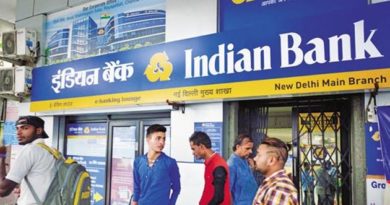FOREIGN DIRECT INVESTMENT IN INDIA
Foreign Direct investment is a major monetary source for the development of any country and India is not an exception. Since investment has always been an issue for the developing economics like India, Foreign Direct Investment (FDI) is one of the measures to source the investment for growing economy. Economic policies of different developing nations have been gradually changing towards free & globalized economies; even many socialist countries, including China have changed policies towards free economy. Many countries including India have been liberalizing their policies for investment from the countries which are teeming with capital resources;on the other hand, developed countries are focusing on new markets where there is availability of abundant workforce, open market and high profits are achieved.Under such circumstances FDI has grown into a most sought tool for capital flow.
Apart from being a critical driver of economic growth, foreign direct investment (FDI) is a major source of non-debt financial resource for the economic development. Foreign companies invest in India to take advantage of relatively lower wages, special investment privileges such as tax exemptions, etc. For a country where foreign investments are being made, it also means achieving technical advancement and generating employment,India has experienced a paradigm shift in its economic policies after the process of liberalization had taken place after balance of payment crisis in 1991. Generally, there may be apprehension regarding outcome of foreign investment, because many developing countries of Latin and Central America have borne the brunt of FDI in seventies and eighties of the last century. It is an established fact that FDI in India has played an imperative role in the development of economy, specifically during the time of crisis situation that occurred during global recession in 2008.The investment came through FDI has allowed India to focus on challenges before the economy.
Between year 2012 to 2022 India has become one of the ten most favorite destinations for FDI due to reasons like stable economic policies, availability of low-cost and quality human resources and obviously unexplored market of Rural India. Top 5 sectors have received highest FDI Equity Inflow during FY 2022-23 are Services Sector Finance, Banking, Insurance, Non-Financial Business, Outsourcing, R&D, Courier, Tech. Testing and Analysis, all together (16%), Computer Software & Hardware (15%), Trading (6%), Telecommunications (6%) and Automobile Industry (5%) .Net new foreign direct investment into India has risen very rapidly in recent years, with FDI reaching a new record level of USD 15,136 million in the 2022-23 fiscal year. India needs more FDI in manufacturing as well as in infrastructure sector because for fast development of economy. It is a well-known fact that Indian consists of 17% of world population yet contributes a measly 2% towards world GDP.
Why India requires FDI?
After experimenting with the philosophy of mixed economy influenced by socialistic pattern of former USSR, India changed its economic policies in its entirety in 1991.But the pivotal requirement to grow economy in an accelerated way is capital, which was a bigger challenge before the policy makers soon after the nation had changed its policies towards globalization and liberalization. For countries like India where various sectors like Heath, Infrastructure, Educaton, Research & Development along with technological innovation require huge capital and the solitary way to get the capital is positively FDI. The flow of FDI in India from across the world has been aiding in acquiring the funds at lower cost with upgraded technology transfer and greater avenues for employment generation. We may consider following reasons in favor of Foreign Direct Investment:
1-Sustainable Growth of Economy
The Indian economy, according to IMF estimates, will emerge as the world’s third largest economy by 2027, leapfrogging Japan and Germany, with GDP crossing US$5 trillion dollars. By 2047, India aspires to be a developed economy. According to recent estimates, India will need at least 6.5% growth to reach its first milestone in 2027 and about 8%–9% growth to reach the second in 2047. The buoyancy in the economy instills confidence that the country, in the short run, will likely achieve these numbers. The pace in the first few years will be critical for a sustained, fast-growth trajectory in the long run. In light of the Q1& Q2 GDP growth of the current fiscal, we have revised our growth estimate for this year to reflect it. We expect GDP to grow in the range of 6.5% to 6.8% primarily due to festive spending followed by higher government spending before the upcoming national elections mid-next year. We believe GDP growth will be over 6.5% next year as geopolitical uncertainties subside, and the global economy bounces back on a stronger growth path.
2-Technological Development
We are all aware that the research and development activities in India are in the developing stage; our universities and institutions have not been in a position to generate world class research and innovations thus making India vulnerable and deprived of modern technology. India’s government has been making efforts to improve the quality of research & development in the institutions, but at the same time this process will take time to give appropriate yields.Under these Circumstances FDI can make the difference, not only to provide instant state of the art technology but to assist our Universities/Institutions to prepare infrastructure & skill for the up- gradation.
3-Better use of Natural resources.
Like most of the other developing economies of Latin America & Saharan group of Africa, India has abundant natural resources which are yet to be explored for the benefit of the population and economy as well. Since various issues like Global warming, Carbon footprints and pollution have taken front seat for the world and in future exploration of natural resources will in tandem with environment protection. Here Foreign Investment has to play a two-fold role of providing resources for exploration of resources and develop such a technology that environment can also be endangered.}
4-Investment in High-Risk areas
Investment in untapped and new areas may be a risky proposition for the domestic investors due to various reasons like unavailability of required, state of the art technology and absence of assessment for high risk and resources as well. Since the FDI gives investors high rate of return and they have high class technology to pass on to these countries, these Investors always ready to invest in those areas.
5-Impacting Balance of payment position
India had experienced a BOP crisis in 1991, when its foreign reserve had dried up for the payment of bills for merely 15 days. Developing nations have often face BOP crisis due to lack of resources to earn more foreign funds,the inflow of FDI will help in improving the balance of payment. Investors which feel that goods produced in India will have a low cost with high quality, will produce the goods and export the same to other country which helps in increased export. FDI has helped not only India but the entire developing world to accomplish stability as well as economic growth with the help of investments in different sectors. It also helps in generating employment to the unemployed, generating revenues in the form of tax and income, financial stability to the government, development of infrastructure.
Chronology of events regarding FDI of post reform period (after 1991)
In 1990–1991, India’s inflation rate was 12% with current account deficits of 3.1%. During that period, China was an attractive destination for foreign investors due to policy corrections. In mid-1991, Indian government’s foreign exchange was very low, only having enough dollars for two weeks’ worth of import. To overcome the problem, India had pledge tons of gold to Bank of England and Union Bank of Switzerland. After the disaster of 1991, neo-liberal reforms were introduced which was never previously allowed; by opening the economy to initiate privatization, changes in tax-reforms, deregulation of economic trade practices, allow international trades and investments, control inflation level. The policy of FDI under liberalization, privatization and globalization was introduced.Initially, very few sectors such as manufacturing, mining were liberalized, but later, more sectors like service, telecommunications & retail were liberalized. The liberalization is prone to affect various industries, and these effects may vary immensely across industries.
In 1997, the government of India had approved 100% FDI in wholesale cash-and-carry market with automatic approval. Later in 2006, FDI of up to 51% in single-brand retail was allowed by the government subject to prior approval. It was a vital decision and brought huge transformation for the Indian economy and retail sector as well. Between the year 2006 and 2010, 94 proposals had been received, out of which 57 were accepted and implemented for single-brand retailing. The flow of FDI had increased heavily due to the liberalization of the economy with FDI of $1.8 billion between 2000 and 2010 through retail sector alone.
According to the CII-EY survey on “FDI in India – Now, Next and Beyond, Reforms and opportunities” India can expect to attract US$120 billion to US$160 billion of FDI annually by 2025 if it manages to increase the FDI to GDP ratio between 3% to 4% range by 2025. This can aid in bringing back India’s GDP growth rate to 7%-8% range. The above growth will be stimulated by the recent structural reforms, raising of the FDI limits in multiple sectors and the Atmanirbhar Bharat strategy of the Government of India. The report, based on a CII-EY Survey to gauge the market sentiment amongst the Indian as well as non-Indian companies, notes that India has emerged as one of the top three choices for overseas investments in the next 2-3 years. About 50% of respondents see India amongst the top three economies or leading manufacturing destinations of the world by 2025. The respondents have pinned down market potential, skilled workforce, and political stability as the top three reasons to make India their favored destination.
It seems highly probable that we will see a surge in consumer spending,with a high rate of the population falling under age group between 15–59 years and being considered as a second largest populated country. A point to consider is that youth and elite consumers had an inclination towards brands and multi-brand supermarkets, whereas older generation and non-taxpayers preferred buying from convenience stores, discount stores. Economic betterment is considered to be due to the liberalization of the FDI policies and rigid licensing systems. The retail sector is backbone of Indian economy and one of the fastest growing sectors.
Market size
India has become an attractive destination for FDI in recent years, influenced by various factors which have boosted FDI. India ranked 40th in the World Competitive Index 2023 jumping 3 positions from the 43rd rank in 2021. India was also named as the 48th most innovative country among the top 50 countries, securing 40th position out of 132 economies in the Global Innovation Index 2023. India rose from 81st position in 2015 to 40th position in 2023. These factors have boosted FDI investments in India. India’s FDI inflows have increased 20 times from 2000-01 to 2023-24. According to the Department for Promotion of Industry and Internal Trade (DPIIT), India’s cumulative FDI inflow stood at US$ 937.58 billion between April 2000- June 2023, mainly due to the government’s efforts to improve the ease of doing business and relax FDI norms. The total FDI inflow into India from April 2023 to June 2023 stood at US$ 17.56 billion and FDI equity inflow for the same period stood at US$ 10.94 billion.From April 2000–June 2023, India’s service sector attracted the highest FDI equity inflow of 16% amounting to US$ 105.40 billion, followed by the computer software and hardware industry at 15%, amounting to US$ 95.88 billion, trading at 6%, US$ 40.05 billion, telecommunications at 6%, US$ 39.27 billion and automobile industry at 5%, US$ 35.14 billion.
India also had major FDI inflows during April 2000-June 2023, coming from Mauritius at US$ 164.83 billion with a total share of 26%, followed by Singapore at 23% (US$ 151.16 billion), the USA at 9%, (US$ 61.26 billion), Netherlands at 7%, (US$ 45.28 billion) and Japan at 6%, (US$ 39.94 billion).The state that received the highest FDI during April 2000-June 2023 was Maharashtra (US$ 58.43 billion) at 29%, followed by Karnataka (US$ 45.92 billion) at 23%, Gujarat (US$ 32.63 billion) (16%), Delhi (US$ 27.06 billion) (14%), and Tamil Nadu (US$ 9.13 billion) (5%).In 2022 India received 811 Industrial Investment Proposals which were valued at Rs. 352,697 crore (US$ 42.78 billion). Cumulatively, the total amount of Industrial investment proposals for 2022 increased to US$ 298 billion (Rs. 23.6 lakh crore) as compared to US$ 169.5 billion (Rs. 13.8 lakh core) in the previous year.
Government Initiatives
In recent years, India has become an attractive destination for FDI because of favorable government policies. India has developed various schemes and policies that have helped boost India’s FDI. These schemes have prompted India’s FDI investment, especially in upcoming sectors such as defense manufacturing, real estate, and research and development. Some of the major government initiatives are:
- Due to the Make in India Initiative, FDI equity inflow in the manufacturing sector between 2014-2022 has increased by 57% over the previous 8 years i.e. 2006- 2014.
- The Reserve Bank of India has taken a number of actions to increase foreign exchange inflows. These actions consist of:
- Exempting additional Foreign Currency Non-Resident (Bank) [FCNR(B)] and Non-Resident (External) Rupee (NRE) deposits from Cash Reserve Ratio (CRR) and Statutory Liquidity Ratio (SLR).
- Authorization for banks to accept new FCNR(B) and NRE deposits without regard to current interest rate regulations until the end of October 2022.
- Inclusion of all new issuances of 7-year and 14-year G-Secs under the Fully Accessible Route (FAR) for FPls.
- Exemption from the short-term limit for FPls’ investments in G-Secs and corporate debt made until October 31st, 2022.
- Permitting FPI in commercial paper and non-convertible debentures with an original maturity of up to one year.
- A temporary increase in the limit for external commercial borrowings (ECBs) under the automated route from US$ 750 million or its equivalent per fiscal year to US$ 1.5 billion.
- Increase in the all-in cost ceiling under the ECB framework by 100 basis points, subject to the borrower having an investment grade rating.
- Permission for AD Cat-I banks to use foreign currency borrowings made abroad to fund foreign currency loans to organizations for a variety of end uses other than exports.
- The Government of India increased FDI in the defense sector by liberalizing it to 74% through the automatic route and 100% through the government route.
- The Foreign Investment Facilitation Portal (FIFP) is a new online single-point interface of the government for investors to facilitate Foreign Direct Investment proposals to evaluate and further authorize them under the Government approval route.
- The sectoral cap for the pharmaceutical industry has been lowered, 74% of FDI is permitted in the Brownfield pharma sector via the automatic method, and 100% is permitted via the approved route.
- In the civil aviation sector, 100% FDI is allowed under automatic routes in brownfield airport projects.
- For single-brand retail trading, local sourcing norms have been relaxed for up to 3 years and 100% FDI is allowed under automatic route.
- The government has amended the Foreign Exchange Management Act (FEMA) rules, allowing up to 20% FDI in insurance company LIC through the automatic route.
- The government is considering easing scrutiny on certain FDIs from countries that share a border with India.
- The implementation of measures such as PM Gati Shakti, single window clearance and GIS-mapped land bank is expected to push FDI inflows in 2022.
- The government is likely to introduce at least three policies as part of the Space Activity Bill in 2022. This bill is expected to clearly define the scope of FDI in the Indian space sector.
- In September 2021, India and the UK agreed to an investment boost to strengthen bilateral ties for an ‘enhanced trade partnership’.
- In September 2021, the Union Cabinet announced that to boost the telecom sector, it will allow 100% FDI via the automatic route, up from the previous 49%.
- In August 2021, the government amended the Foreign Exchange Management (non-debt instruments) Rules, 2019, to allow a 74% increase in FDI limit in the insurance sector.
- Many reforms like National Technical Textiles, Silk Samagra-2 scheme, Seven PradhanMantri Mega Integrated Textile Region and Apparel (PM MITRA) Parks, Production Linked Incentive (PLI) Scheme for Textiles to promote the production of Man-Made Fibre (MMF) Apparel, MMF Fabrics and Products of Technical Textiles, and more initiatives are taken by the government to enhance export and to promote FDI in the textile sector.
Road Ahead
India has recently become a major global hub for FDIs. According to a survey held in 2020, India was among the top three global FDI destinations; about 80% of the global respondents had plans to invest in India. Furthermore, India has provided huge corporate tax cuts and simplified labour laws. According to the OECD FDI restrictiveness index, the country has also reduced its restrictions on FDI; overall FDI restrictions have reduced from 0.42 in 2003 to 0.21 in 2020 (i.e. last 17 years). India has remained an attractive market for international investors in terms of short- and long-term prospects. India’s low-skill manufacturing is one of the most promising industries for FDI. India has also developed excellent government efficiency. The developments in government efficiency are primarily due to relatively stable public finances (despite COVID-induced challenges) and optimistic sentiment among Indian business stakeholders concerning the funding and subsidies offered by the government to private firms. All of these factors may enable India to attract FDI of US$ 120-160 billion yearly by 2025.




